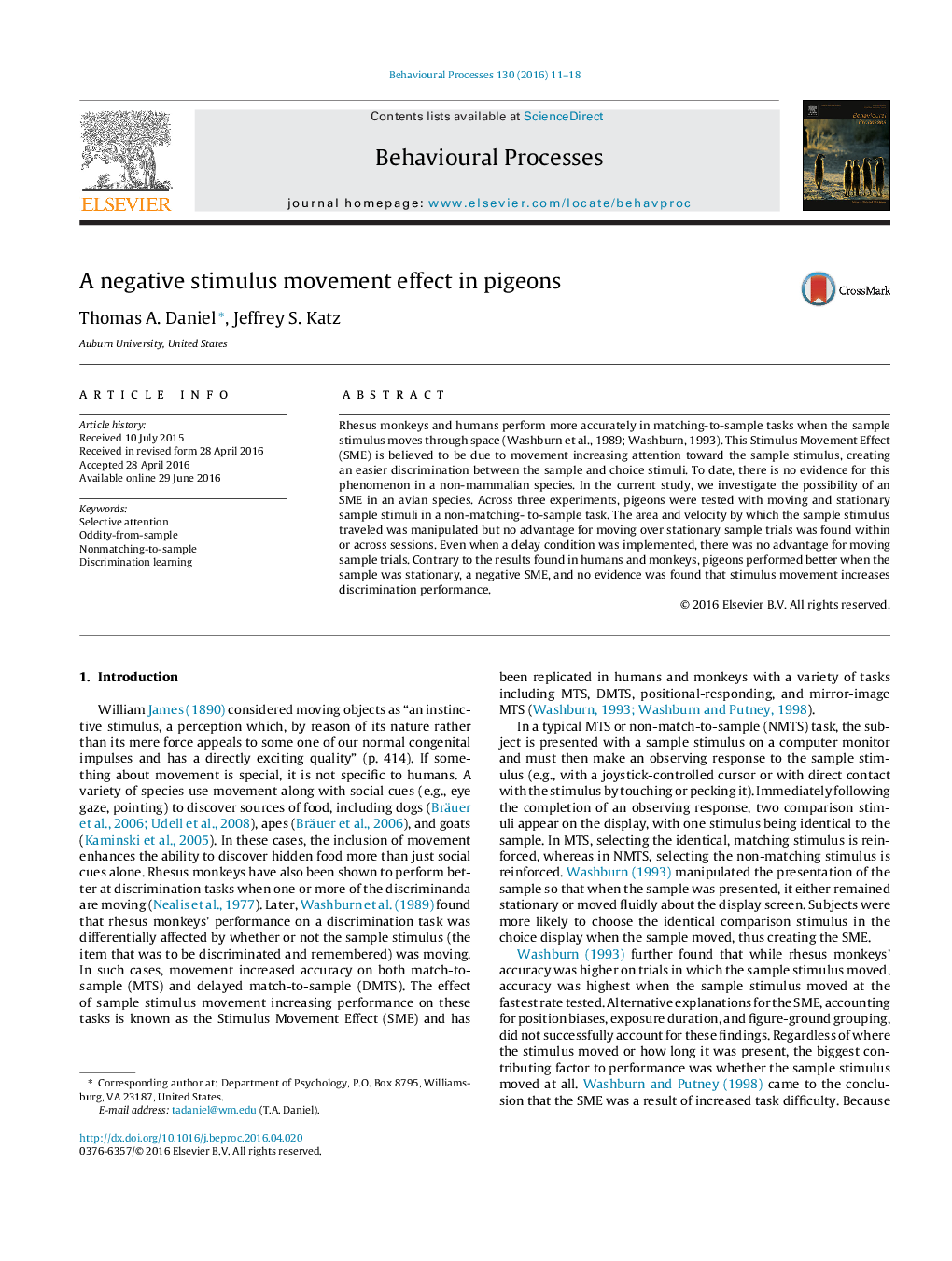| Article ID | Journal | Published Year | Pages | File Type |
|---|---|---|---|---|
| 2426377 | Behavioural Processes | 2016 | 8 Pages |
•Three experiments exploring potential Stimulus Movement Effect in pigeons.•Unlike primates, pigeons show no advantage in moving discriminations vs. stationary.•Contrary to prior research, response accuracy was worse when sample stimulus moved.•Differences between species may be due to differences in adaptive pressures.
Rhesus monkeys and humans perform more accurately in matching-to-sample tasks when the sample stimulus moves through space (Washburn et al., 1989; Washburn, 1993). This Stimulus Movement Effect (SME) is believed to be due to movement increasing attention toward the sample stimulus, creating an easier discrimination between the sample and choice stimuli. To date, there is no evidence for this phenomenon in a non-mammalian species. In the current study, we investigate the possibility of an SME in an avian species. Across three experiments, pigeons were tested with moving and stationary sample stimuli in a non-matching- to-sample task. The area and velocity by which the sample stimulus traveled was manipulated but no advantage for moving over stationary sample trials was found within or across sessions. Even when a delay condition was implemented, there was no advantage for moving sample trials. Contrary to the results found in humans and monkeys, pigeons performed better when the sample was stationary, a negative SME, and no evidence was found that stimulus movement increases discrimination performance.
